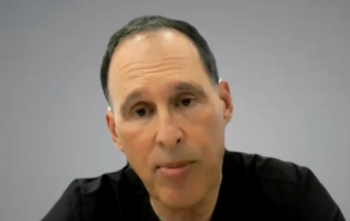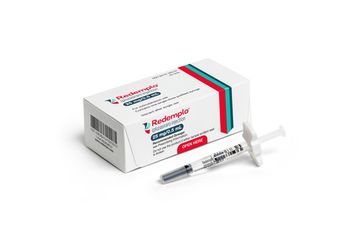
Moving toward value
Catalyst for Payment Reform has released a national scorecard describing the current state of value-oriented payment, finding that about 11% of commercial payments are tied to value
Late last month, Catalyst for Payment Reform (CPR), a national, not-for-profit collaborative of large employers, announced that 10.9% of commercial healthcare payments today are tied to value rather than volume. The organization has set a goal to increase that figure to 20% by 2020.
“It’s the beginning of holding ourselves as a country accountable for payment reform because we know where we stand and how much harder we have to work,” says Suzanne Delbanco, CPR executive director.
The national scorecard is an aggregate view of self-reported commercial data from 57 participating health plans, covering 104 million lives. Delbanco says the voluntary survey is a descriptor of where the country is now in terms of leveraging payment reform to cut waste and improve quality. CPR did not count efficiency measures but rather payments made under models that demand quality improvement.
Of the payments that are value-oriented, 57% come from arrangements that put providers at risk and 43% come from arrangements that offer providers financial incentives without downside risk, according to the analysis. Additionally, even though 98% of plans surveyed offer their members cost calculators, only 2% use the tools.
“You can see that this is a call for action,” Delbanco says. “It’s not just a call to action for the health plans that provided the data, but to employers, to providers and to all stakeholders in healthcare to work together. I think these results give us important insights into the state of payment that we didn’t have before.”
In a panel discussion last month revealing the scorecard data, Commonwealth Fund President David Blumenthal said the real choice the country has today is between rationing care and re-engineering care. He believes payment reform is a key pillar in the re-engineering of the healthcare system to confront the unsustainable costs.
“What payment reform makes possible is doing the right thing,” Blumenthal said. “It doesn’t guarantee that it’s done, but it makes it possible.”
Also during the discussion, Jill Rubin Hummel, vice president of payment innovation for WellPoint, noted the high level of waste and tremendous variation in care delivery even when evidence-based guidelines are established.
“It’s not just what we pay for, it’s what we don’t pay for that drives our current quality status,” she said.
For example, payers typically reimburse for tests and procedures without full confidence that all the services were beneficial, according to Hummel. At the same time, most payers don’t reimburse for patient follow up, navigation support, improvements in health status or reductions in costs-all high-value activities.
CPR’s platform includes reporting on the shortfalls of the current payment system; developing principles and a framework for change; establishing a purchaser strategy; and aligning efforts between private and public sectors. For example, Ohio’s Medicaid program this year began using CPR’s model contract language in its managed care contracts to drive value-based payment innovation. Another recent initiative-the National Compendium on Payment Reform-is a companion to the scorecard and compiles various private-sector payer programs that encourage value into a searchable database.
MHE: What potential does payment reform have to bring value to the healthcare system?
Delbanco: Tying payment to performance is very important, but it’s not the only thing we think payment reform can do.
We also think that there are forms of payment that can encourage doctors and hospitals to be more careful stewards of the limited healthcare resources we have. And, when you pay fee for service-which is largely how we pay for care today-you’re giving incentives for providers to deliver more care and more expensive care.
When we say ‘value-oriented payment,’ we mean either payment that’s tied to performance or in some way designed to cut waste. And, classic examples of that would be bundled payments or global payment or shared risk arrangements where providers have some skin in the game, where they stand to benefit if they are very efficient in delivering the right care at the right time in the right way. So, the 20% goal is a balance between being quite ambitious and realistic. If we don’t put a goal out there, then it’s very easy to be incremental for a long time.
MHE: What can private payers do to help the healthcare system reach the goal of 20% of payments being value-based?
Delbanco: They negotiate with providers, and they should be thinking not just about negotiating what the payment amount is going to be, but also the payment method, and that’s what’s new here.
Secondly, they probably have some influence over the benefit designs that are available, certainly in the commercial sector. And thinking about how to align the incentives all the way from what the consumer experiences to what the provider experiences can be very powerful. Even though our focus at CPR is on that relationship between those who are paying for care and the providers, I wouldn’t want to leave out the fact that there are innovative things that most plans can do around creating different types of incentives for their patient members that can really reinforce what they’re doing on the payment reform side.
CPR hasn’t endorsed certain payment reforms over others. There needs to be a lot more trial and error out there so that we can all learn from it. With that being said, we think that there are definite opportunities to experiment with bundled payments since the evidence does suggest that it can help both increase quality and contain costs.
MHE: Probably the number one criticism of bundled payment is whether providers are going to withhold care.
Delbanco: Right, and that’s why having quality measures is essential. And the other thing that’s important is obviously the payment amount.
Bundled payment won’t save us anything if it’s an excuse for providers just to negotiate a higher rate. So, I think it has to be designed in such a way that a provider can stand to do better than they’re doing with fee for service today, but only to the degree that the payer, whether the employer or the health insurance plan, also stands to potentially do better because the quality is better.
MHE: Many contracts now are designed for shared savings. It’s much easier to get providers to agree to shared savings than shared risk.
Delbanco: Right, so I understand why we’re starting there, but I would emphasize very strongly that we need to have a plan. If there’s a three year contract, there needs to be a staging toward shared risk.
In the original proposed rule that came out of Medicare for its shared savings program, there was a faster and a more intense migration to shared risks than they ended up with in the final rule. But, private sector purchasers are not going to be eager for very long to just keep paying more on top of what they’ve already been paying.
And, if there are shared savings, they’re going to want to see some aspect of the payment method that really motivates the provider to provide better quality and use fewer resources. A migration to shared risk is something that I would advise because, there’s no doubt in my mind that that’s part of the future. And I think it’s just a question of how quickly we get there. Those who get there first will be in a better position.
MHE: And, it also puts private insurers in an interesting position where providers need their help to manage risk.
Delbanco: There are a lot of providers that are not ready to take risk on yet. And, I’m not at all suggesting that we force it down their throats before they’re ready, but, I do think that there is a migration path that the health plans can help them follow.
And, to your point, there are some aspects of expertise that the health plans bring to the equation-not just the ability to share risk but also the tracking of financial and quality information. The health plan may be well set up to help them do that.
MHE: You also say we need incremental reform. In what ways?
Delbanco: This will sound a little bit retro, but another philosophy that CPR has is that we know fee for service is going to be around for awhile. And, while we want to move away from it, it still might be worthwhile trying to reform it incrementally while it’s here.
Most people when they think about payment reform don’t think about reforming fee for service. They think about bundled payment, global payment, etc., but in our view, there is still a lot of opportunity working within the fee for service payment system to create incentives for quality and to create incentives for less spending.
I’ll give you an example which is not just strictly to fee for service but it could be applied within any payment method: the area of maternity care. The way we pay for labor and delivery services today is largely that we pay more for labor and delivery care when there’s interventions. Let’s say a woman has a Caesarian delivery or labor is induced. Whether it’s elective or not, we always pay more when there’s intervention. It would behoove us to think of every lever we can push to try to reduce that rate of unnecessary interventions because almost all the evidence shows that when you let human nature take its course, the outcomes are almost always better for mother and baby.
MHE: What are some levers for reform on the consumer-facing side of the equation?
Delbanco: One is price transparency, and even though price transparency is not payment reform per se, we think it’s a really important building block. It’s important for consumers to understand what care is going to cost, and it’s equally important for employers to really have the ability to understand how they’re spending their money.
There are barriers today that health plans have erected that make that difficult. One of those barriers is agreeing, in negotiations with providers, essentially to a gag clause that prohibits them from sharing the negotiated payment rates they’ve arrived at with that provider. When a health plan offers a healthcare cost calculator on their website, that data is just missing.
Obviously the provider is partly responsible there too, but if health plans just had a policy to say they will not accept gag clauses, that could go a long way.
Another is that some health plans get into data ownership issues with employers where the amount that they’re paying to providers is proprietary. And, that just gets really difficult in an age where employers are feeling like their healthcare costs are unsustainable and they can’t look at how their money’s being spent.
Two things that the health plans can do is stop agreeing to the gag clauses and agree to let the employers work with their data as they need to, so that they can be as well informed as possible.
MHE: What other benefit designs are emerging now?
Delbanco: Our members are very interested in the concept of reference pricing. It’s still very early in its application to medical ‘commodities’ if you will, like labs or colonoscopy, but it’s been used for a long time with drugs.
You set a reference of price and then anything that costs more than that, the consumer will pay the difference out of pocket. And, the reason why the employers in my group are really interested in that is not because they are looking for another way to shift costs to the consumer, but because as they get more educated about how much amazing price variation there is in the market, they realize that they wanted to send a signal to providers that they were onto it. And it wasn’t going to be acceptable much longer. You can pay a 700% difference in prices within one market for the same service.
By setting a reference price, you’re really signaling to the providers what you think is a reasonable price and a price that will still have enough access for your employee population to get the care they need.
I think the other thing that we have to really recognize is that between the 48 million uninsured people and the 25 million or so who are in some kind of consumer-directed health plan, we have a sizable portion of the population that cares a lot about what things cost.
The 2013 National Scorecard on Payment Reform created by CPR is an aggregate view
of self-reported data from health plans:
The 2013 National Compendium on Payment Reform created by CPR is a searchable and sortable, detailed database of private-sector payment reform initiatives across the country:
>> Suzanne F. Delbanco, PhDPreviously the founding CEO of The Leapfrog Group, Delbanco also serves on the Coordinating Committee of the Measures Application Partnership, HFMA’s Healthcare Leadership Council, the National Commission on Physician Payment Reform and the Health Care Incentives Improvement Institute board, and participates in the Healthcare Executives Leadership Network. She earned a PhD in Public Policy from the Goldman School of Public Policy and a MPH from the School of Public Health at the University of California, Berkeley.
Newsletter
Get the latest industry news, event updates, and more from Managed healthcare Executive.

















































